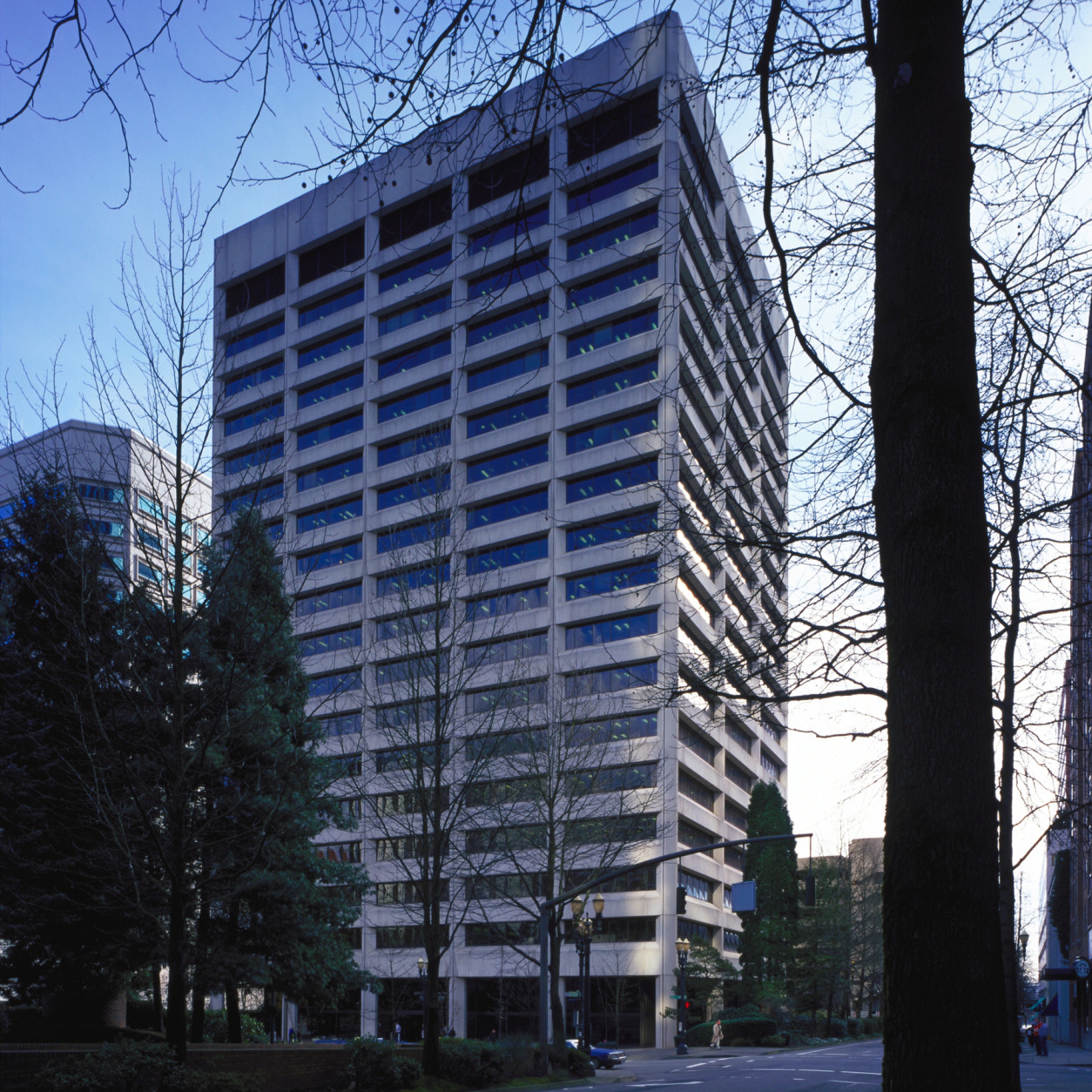
Before and After – Federal building’s impressive makeover serves as model for agencies
After a four-year renovation, the Edith Green-Wendell Wyatt (EGWW) Federal Building is a model of success for the green construction movement. The building now...
Standing 18 stories high in the heart of Portland, Oregon, the 35-year-old Edith Green-Wendell Wyatt (EGWW) Federal Building needed a renovation.
In 1996, the General Services Administration commissioned a study of the building, which was home to 16 federal agencies, including the IRS, Forest Service and Bureau of Land Management, and about 1,200 federal employees. The study revealed opportunities to update the building’s systems and improve accessibility to comply with modern codes.
“If we didn’t put in place savings associated with water reduction [and] energy reduction, our costs for maintaining the facilities would just gradually rise with the cost of utilities,” said Chaun Benjamin, the Regional Commissioner for GSA’s Public Buildings Service Northwest/Arctic Region.
So in 2010, GSA awarded contracts to architecture firms and construction companies, and they got to work.
After a four-year renovation, EGWW now has new mechanical, electrical, plumbing and data systems. Construction crews swapped its traditional, concrete exterior for a modern, atypical glass structure. It’s now one of the most energy efficient office buildings in the country.
The new building features a 13,000-square-foot solar panel on the roof, producing 3 percent of the building’s energy requirements each year.
Modern elevators installed in the building generate power when they descend.
“That’s a wonderful opportunity for reducing our energy needs,” Benjamin said in an interview with Federal Drive host Tom Temin. The interview is part of Federal News Radio’s special report, The Federal Office of the Future.
Thanks to the upgrades, EGWW uses about half as much energy as it did pre-renovation and 60 percent less water than typical office buildings.
A roof canopy collects 600,000 gallons of rain water each year, some of which is stored in the basement. That water is used to flush toilets and irrigate plants surrounding the building.
GSA expects the changes to save between $300,000 and $400,000 dollars annually in utility costs.
“By both preserving and improving our federal buildings, we ultimately reduce energy consumption and cut costs while lowering our impact on the environment. It’s a win-win,” PBS Commissioner Norman Dong said.
So federal budgets and the environment are happy, but what about employees?
GSA decided it was in its best interest to move offices and employees to a leased space during the renovation, Benjamin said.
The contractors “did a great [job] of informing the new tenants of what it was going to look like, holding many different forums to allow tenants to come to the building and understand the building before they moved into the building,” he said.
Feedback from employees on the new building has been positive. The new structure has an open workspace and allows more natural light into EGWW.
“They love to have the daylight, to have open work spaces, where they’ll be able to gain that sunlight,” he said.
Increased exposure to natural light has been linked to more restful sleep at night and alertness during the day. That, in turn, Benjamin hopes, will lead to a happier workforce and increased productivity.
In 2014, the building won an American Institute of Architects Green Award, which honors buildings with sustainable architecture and designs that protect the environment.
“By incorporating smart building technologies with radiant heating and cooling, coupled with a state of the art building enclosure, Edith Green-Wendell Wyatt represents the model of energy efficiency for high-rise office buildings,” said Troy Dickson, project executive for Howard S. Wright, a construction company.
Two other federal buildings won the green award last year: The U.S. Land Port of Entry in Warroad, Minnesota, and the Wayne N. Aspinall Federal Building and U.S. Courthouse in Grand Junction, Colorado.
“It’s important that the federal government lead by example and be leaders in transforming the way we think about buildings,” Benjamin said. “It’s our responsibility to lead sustainability in our country and be a change leader for the entire world.”
Copyright © 2025 Federal News Network. All rights reserved. This website is not intended for users located within the European Economic Area.





